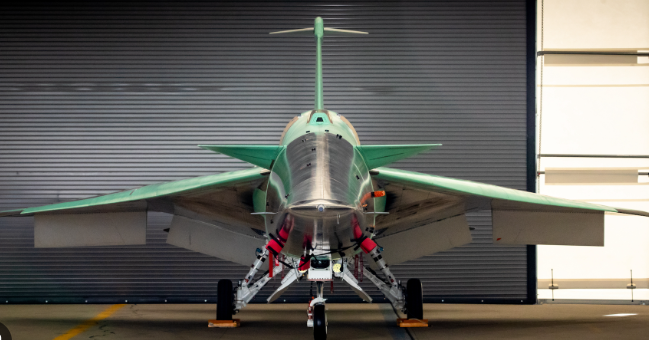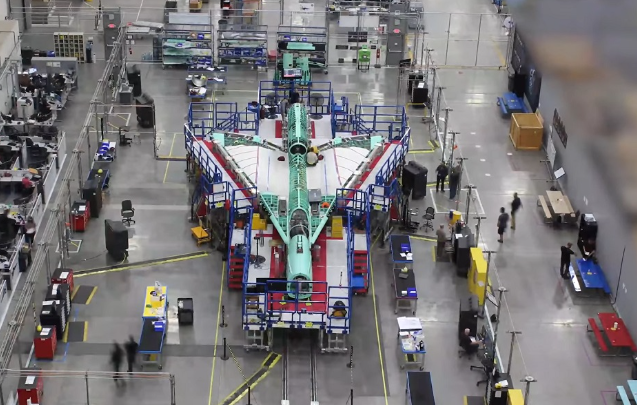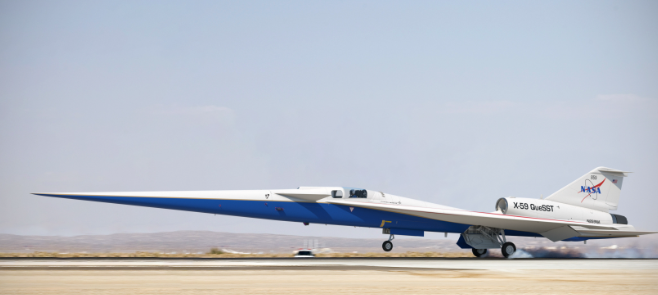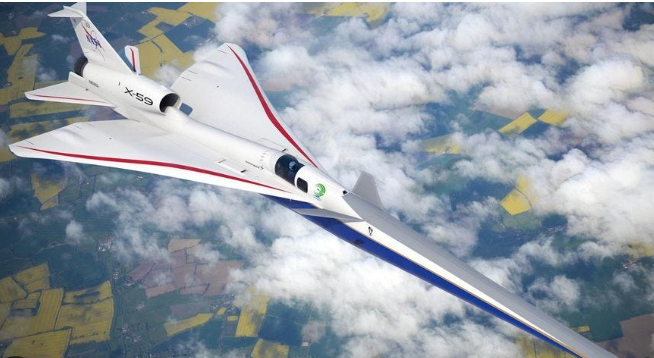
NASA’s X-59 Jet, Set to Soar ‘Faster than Sound’ – 10 Key Insights
NASA’s X-59 Jet, Surpassing the Sound Barrier
In the realm of aerospace innovation, NASA’s X-59 jet stands as a beacon of cutting-edge technology, promising to redefine the possibilities of air travel. Here are 10 key insights into this remarkable aircraft that can traverse the skies ‘faster than sound’:
1. Supersonic Advancements: NASA’s X-59 is designed to break the sound barrier, symbolizing a significant leap in supersonic travel. With its groundbreaking technology, it aims to mitigate the sonic booms associated with faster-than-sound flight, paving the way for more sustainable and widely accepted supersonic travel.

2. Low Sonic Boom: One of the standout features of the X-59 is its ability to produce a considerably lower sonic boom compared to traditional supersonic aircraft. This innovation aims to address the longstanding concerns related to noise pollution associated with breaking the sound barrier.
3. Community Acceptance: The X-59 project prioritizes community acceptance, recognizing the importance of minimizing disturbances caused by sonic booms. By developing an aircraft with a reduced noise footprint, NASA aims to garner public support for the resurgence of supersonic travel.
4. Piloted by Humans: Unlike some experimental aircraft, the X-59 is piloted by humans, reaffirming NASA’s commitment to ensuring that cutting-edge technology aligns seamlessly with human expertise. This integration of skilled aviators emphasizes the importance of human control in advanced aeronautics.

5. Shape Matters: The X-59 features a unique shape designed to minimize the impact of sonic booms. Its slender body and long nose are meticulously crafted to enhance aerodynamics and reduce disturbances in the air, contributing to a smoother and more efficient flight.
6. Community Overflight Tests: Before the X-59 takes to the skies for commercial use, NASA plans to conduct extensive community overflight tests. These tests will involve flying the aircraft over various communities to gauge public reactions and gather valuable data on the perceived noise levels.
7. Environmental Impact: NASA’s X-59 is not just about speed; it’s also about environmental responsibility. The project places a strong emphasis on understanding and mitigating the potential environmental impacts of supersonic flight, contributing to the development of greener aviation technologies.
8. Sonic Thump: Instead of the traditional sonic boom, the X-59 is expected to produce a softer “sonic thump.” This innovative approach aims to make supersonic flights less disruptive and more acceptable to both regulators and the general public.

9. International Collaboration: The X-59 project is a testament to international collaboration. NASA has worked closely with other countries, sharing knowledge and expertise to push the boundaries of aeronautical engineering. This collaborative spirit underscores the global significance of advancing supersonic travel.
10. Shaping the Future of Air Travel: In essence, NASA’s X-59 is not just a technological marvel; it’s a precursor to the future of air travel. By addressing the challenges associated with supersonic flight, the X-59 paves the way for faster, more efficient, and environmentally conscious aviation, ushering in a new era in the skies.
As the X-59 project progresses, it symbolizes a paradigm shift in the way we perceive and experience air travel. With its blend of cutting-edge technology, environmental awareness, and community-centric design, NASA’s X-59 is poised to leave an indelible mark on the history of aviation.
As we delve deeper into the realm of supersonic travel, the impact of NASA’s X-59 jet becomes even more profound, shaping the trajectory of aviation in ways previously thought unimaginable.
The X-59 project is a treasure trove of data-driven innovation. NASA’s meticulous approach involves collecting vast amounts of data during flight tests, community overflight tests, and simulations. This wealth of information is not only vital for the success of the X-59 but also contributes to a broader understanding of aerodynamics and supersonic flight.
Beyond its technical achievements, the X-59 project serves as an educational tool, inspiring the next generation of aerospace enthusiasts. NASA’s commitment to outreach programs and educational initiatives ensures that the knowledge gained from the X-59 project is shared with aspiring scientists, engineers, and aviators worldwide.
For the latest updates-click here.


